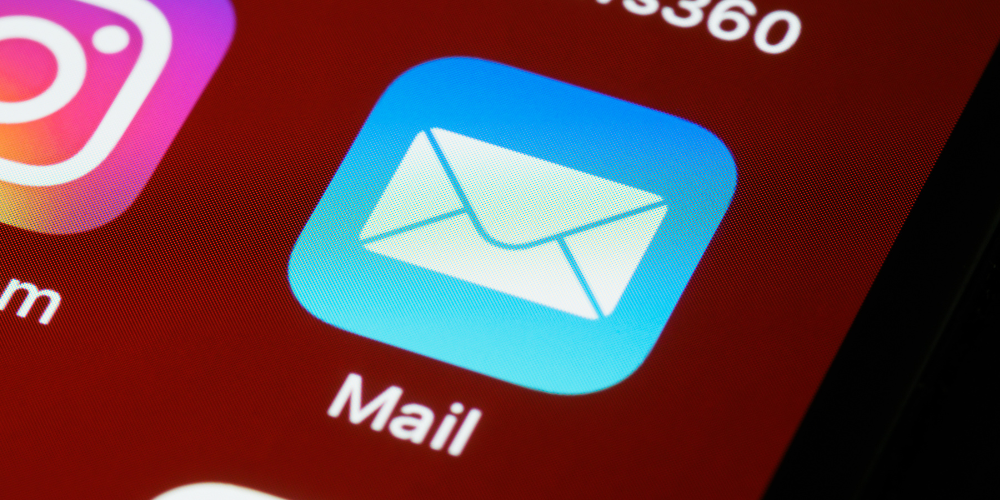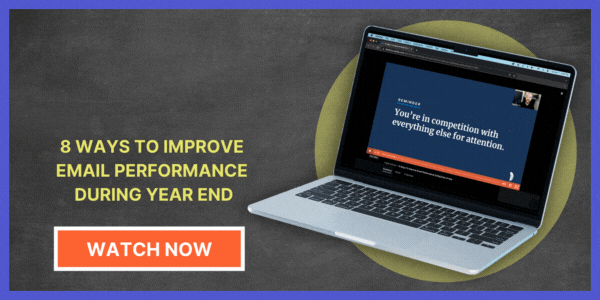How to increase email response rates in 5 simple steps
During the first few days of the COVID-19 pandemic, everyone was stuck inside, and for a short-lived moment, email open rates skyrocketed. Since then, they’ve been in steady decline, with the average open rate across all industries hovering just over 21%.
But, even with today’s open rates, email marketing campaigns average a $36 return for every single dollar spent! I guess email doesn’t only belong to 2020.
With so much data, it’s easy to get distracted by all the minute details available within email marketing platforms — from delivery rates to open rates to click through rates, many marketers have a single data point that they’re obsessed with. But isn’t the end goal an action? A response?
We think having a complete picture and putting all the numbers together will tell a more accurate story than a single metric can, but your picture will never be very clear without a good sense of response rates.
We’re going to break down the five things you can do today to increase your email response rate and start getting the ROI you want.
1. Personalize your email
Including a person’s first name or company’s name makes a difference, but don’t allow this to be the extent of your personalization. The bigger issue here is that you need to know your audience, and your email needs to offer them real value.
Because personalization isn’t simply about using merge fields in your subject line, we’re going to break down the three steps to taking your emails from a general audience to that single recipient.
Research
The first step to offering something of real value is by performing thorough research on what your audience wants and needs. If your email is going to be worth reading, it needs to have the information they’re looking for and be conscious of the problems they’re facing.
There’s no way to get there simply based on a feeling. You’ll also need to do the hard work of researching your audience and curating the information you’re going to share with them.
Segmentation
One of the keys to personalization comes from another vital marketing strategy: segmentation. Segmentation refers to the breaking up of larger audiences into smaller, more specific groups with shared characteristics. For example, a nonprofit should send different communications to its donors and volunteers.
Here are just five ways that you can break up your audience so that you're sending emails to the right person:
- Involvement: Are they new donors or recurring donors? Are they members or volunteers?
- Interest: Are they interested in your annual event? What's drawing the person to your organization?
- Intent: Are they moving toward an action? How much activity have they had with your organization?
- Context: Where did you meet them? Is this a peer-to-peer relationship?
- Consent: Did they give you permission to reach out to them? Or did they unsubscribe?
A large part of personalizing an email is getting specific enough to be relevant for a person. There’s no way to personalize an email that’s for every living person.
Community
Because we’ve used a bunch of “ation” terms, I thought I’d come up with one final one, but really I’m just co-opting a different term: communitization. By this I mean that personalization and segmentation are ways to begin to define the boundaries of your community. But the last step in the process is fostering dialogue.
You may create the forum where your community meets, but since you didn’t create and don’t control the people in this community, you’ll need to actively listen to this group and ask for input.

One way that you can do this in an email is by asking questions that you really want crowd participation on. Make sure that whoever’s reading your email feels like they’re not just being talked at. I email some of my closest friends to keep up on their lives. Maybe I’m just weird, but I encourage you to think of the next marketing email you send out as an invitation to a relationship. Because it really should be!
2. Steal attention with your subject line
Everyone already knows how important subject lines are, but please don’t get bogged down by someone offering you a 10-step formula. Your organization is different from theirs, so what works for their audience may not work for yours.
The important thing to do with your subject line is to apply the rules of personalization and also spark interest. Try to have fun with that first attempt you have to capture attention. First impressions really matter since you’re not guaranteed a second attempt.
But don’t let their importance drag down the process. You still have to get out there and try. So the real key is to continually grow, and A/B testing allows you to do just that. Split up an email list of very similar recipients into two, and send each group the exact same email except with distinct subject lines. Then make sure to pick apart the results and see what you learned.
Don’t believe someone just because they made a post entitled, “7 rules for creating a subject line.” My guess is that you know your audience better than them, so the best next step is to get out there and start swinging. We know how hard it is to click “send.” It’s easier if you can lean on someone else’s idea, but you’re going to have much more success by trusting your own intuitions and then learning from what worked or what could have gone better.
3. Explain yourself
Brian Dean is an authority when it comes to SEO best practices, but he also did some tests on how to increase email response rates. One simple trick he found increased his response rates was including near the top of the email a sentence with the magic word “because.”
Harvard researcher Dr. Ellen Langer found that when people used the word “because” when making requests, they were 28% more likely to receive a positive response. It wasn’t so much about having a good reason behind the “because,” but simply because they offered a reason, the person being asked thought they were more credible.
You don’t need to explain yourself in the first sentence, but keep it near the top of the email. People want to know why they’re receiving the email, even if the reason isn’t so important.
4. Spell out the next step
The secret here is to add a call to action near the end of the email. Whatever it is, don’t just assume that your reader is going to take the action you want them to take without you saying what it is. We all wish we were clairvoyant, but the trick in all relationships is over-communication. Spell out what you want, people may just be open to responding positively. Didn’t someone say, “Ask, and it shall be given”? Just get out there and say what you want.
In many ways this is connected to explaining why you sent the email. I know you have a goal for sending that email, you know you have a goal for sending that email, and your reader probably knows it too. So just be honest and direct. You’re most likely not going to pull a fast one on somebody, and even if you occasionally do, they’ll be unhappy in the long run and you’re much more likely to have a bumpy, turbulent, and short-lived professional relationship.
5. Testing, testing, testing
We already mentioned how important testing is for subject lines, but we think testing is at the heart of purposeful marketing. Instead of giving a fixed number of emails you should send per week or month, we think these are things that you need to test with your audience. You may even want to consider sending more messages during strategic seasons.
Response rates may go down with added emails, but total conversions may go up. Often there aren’t simple answers for every marketing decision, which is why it’s so important to make it a point to learn a little bit from every step along the way.
Here are just a few more ideas that you can test to see what clicks with your specific audiences:
- Do design heavy emails work better than plain text?
- Does the email come from your organization or a person in your organization?
- Is there higher engagement on Tuesdays or Wednesdays? Or why not even Saturdays or Sundays?
Concluding remarks
A good base number to aim for with email response rates is 10%. But the way to get there isn’t by following someone’s else’s advice to a T. There are a few universals like giving readers a reason and making a direct call to action. But there are other things that will require experimenting, like how many emails to send and what the call to action should say.
The important thing when planning and scheduling your email campaign is to align it with your organization’s goals and to make sure it leverages or builds on your other marketing campaigns. Then begin testing your best ideas, and after that, continue testing. As long as you keep learning as a marketer, your organization’s best days are still in the future!
Share this
You May Also Like
These Related Stories

Nonprofit email marketing: A complete guide
![[Blog]-AssociationEmailMarketing-FeaturedImage-1000x500](https://www.feathr.co/hs-fs/hubfs/%5BBlog%5D-AssociationEmailMarketing-FeaturedImage-1000x500.png?width=1000&height=500&name=%5BBlog%5D-AssociationEmailMarketing-FeaturedImage-1000x500.png)
Association Email Marketing: A Complete Guide

.png?width=150&height=63&name=Feathr%20Logo-Main%20(1).png)

